RTF Focus Group Testing Justification
RTF Focus Group Testing Justification_Dec 2015.docx
Generic Clearance for Meaningful Access Information Collections (Conferences)
RTF Focus Group Testing Justification
OMB: 1520-0009
Small Panel Information Collection Justifications (National Industries for the Blind and Columbia Lighthouse for the Blind)
Background:
The Bureau of Engraving and Printing (BEP) will add tactile features to American banknotes so that visually impaired people can use their sense of touch to determine the denominations. The BEP must ensure that the tactile feature is easily perceptible and distinguishable to visually impaired people. This particular phase of the project will assess the perceptibility and distinguishability of six scheme denomination each for two different types of application methods, “intaglio” and “coating embossed.” The BEP has created prototypes, called “coupons,” bearing those six schemes of tactile features for each application method. The paper used to make the coupons is similar to the paper used to make real banknotes. These coupons have been laboratory “aged” to simulate worn currency.
For each tactile feature denomination scheme, the BEP created coupons with the tactile feature in five different configurations as shown in figures 1-4. This is repeated for each application method.
The first three schemes will feature in the upper left corner either rectangles or line tracks as follows:
One symbol in the upper left corner,
Two symbols in the upper left corner,
Three symbols in the upper left corner,
Four symbols in the upper left corner,
Two symbols in the upper left corner spaced apart.
Figure 1. The configurations of the symbols on the coupons
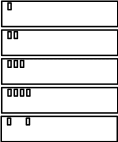
The fourth scheme will feature shapes (star, circle, triangle, square, diamond) in the upper left corner as follows:
Figure
2.
The configurations of the shapes on the coupons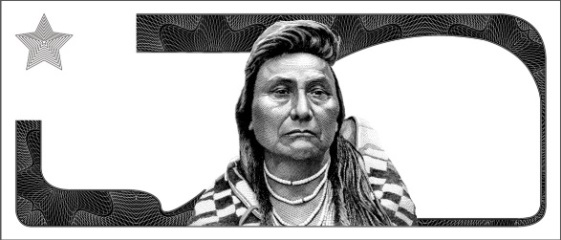
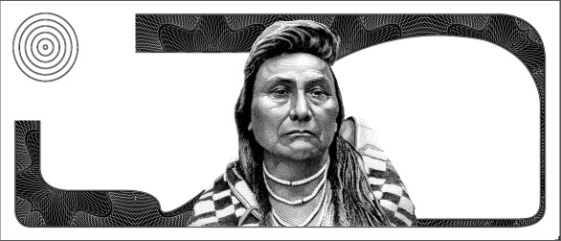
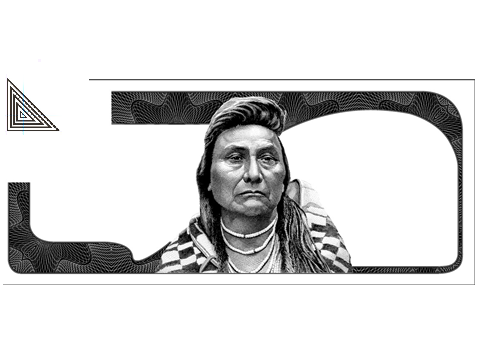
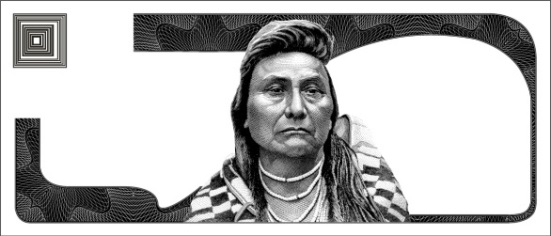
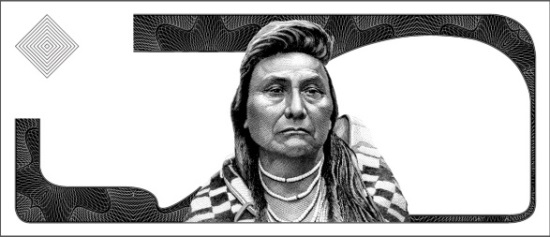
The fifth scheme will include the large numerals currently in use on currency for those with low visibility with a raised pattern on them on the right side of the coupon:
Figure 3. The configurations of the numerals on the coupons



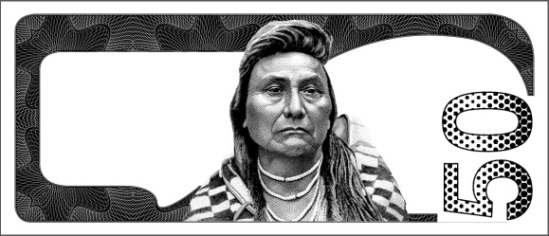
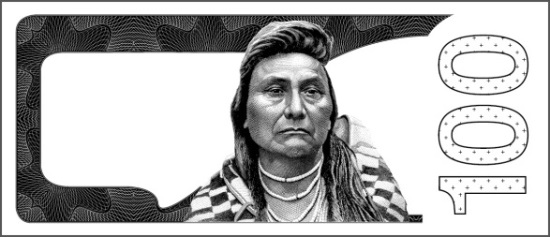
The final scheme will be raised patterns on the side borders of the coupon as follows:
Figure 4. The configurations of the patterned borders on the coupons
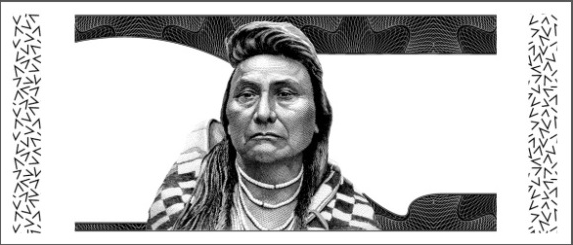

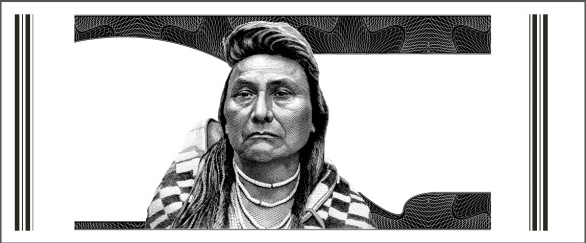
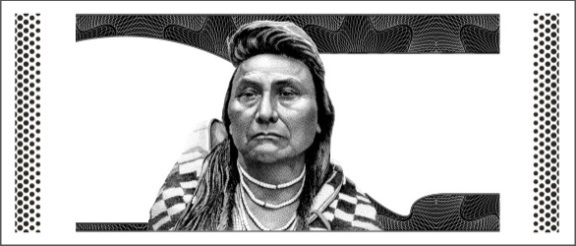
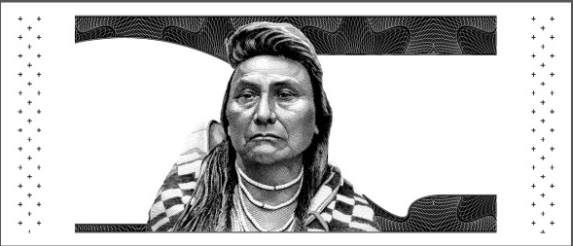
Tactile Sample Sets:
Sample sets A-F, and G-M represent two different application options for possible tactile features, using six denomination schemes. The sample sets have be subject to a wearing process simulated currency in circulation. The sample IDs (application method and denomination scheme) are listed in the table below. The objective of the study is to determine the relative tactility or ease of perception and identification of these various samples with the two application methods. We are getting feedback through accuracy tasks, as designed by the subject matter experts at Lighthouse and Westat.
Sample ID/Task |
Print Method |
Prototype Scheme |
A |
Coat-Emboss |
Rectangle |
B |
Coat-Emboss |
Patterned Rectangle |
C |
Coat-Emboss |
Railroad Tracks |
D |
Coat-Emboss |
Shapes |
E |
Coat-Emboss |
Large Patterned Numerals |
F |
Coat-Emboss |
Patterned Borders |
G |
Intaglio |
Rectangle |
H |
Intaglio |
Patterned Rectangle |
J |
Intaglio |
Railroad Tracks |
K |
Intaglio |
Shapes |
L |
Intaglio |
Large Patterned Numerals |
M |
Intaglio |
Patterned Borders |
Tactile Feature Application Method
A total of 40-50 blind people will be recruited at five locations: American Council of the Blind, Arlington, VA; National Federation of the Blind, Baltimore; MD, Department of Veterans Affairs, Washington, DC; National Industries for the Blind, Alexandria, VA; Columbia Lighthouse for the Blind, Silver Spring, MD and serve as respondents in this project. The respondents will carry out a singular task using specially made coupons, made with paper similar in shape and feel to real banknotes, bearing the six denomination schemes produced by two application methods. The respondents’ accuracy will be recorded. The overall time to complete each type of tactile feature will be collected for reference purposes. The respondents will also be asked to rate the difficulty of determining the tactile feature on a scale of 1 (very difficult) to 5 (very easy).
The test protocol that will be used at these gatherings is based upon the protocol previously developed by Westat, Inc. under contract with the BEP. It has been revised to focus on just one task and is otherwise nearly identical to the protocol that was successfully used by BEP at the California State University at Northridge (CSUN) Technology and Disabilities Conference as well as with several focus groups. This protocol was developed to ensure the method of presenting the various samples to the blind participants and collecting the associated data and comments regarding the samples evaluated provides the most relevant and accurate feedback and data for use by the BEP in refining their tactile feature development effort for the future.
Type of Intake |
Estimated Number of Respondents |
Estimated Number of Intakes per Respondent |
Average Burden Hours per Intake |
Estimated Total Burden Hours Requested
|
In-Person Questions |
50 |
1 |
30 minutes |
25 hours |
|
|
|
|
|
| File Type | application/vnd.openxmlformats-officedocument.wordprocessingml.document |
| Author | Pressman Sabra |
| File Modified | 0000-00-00 |
| File Created | 2021-01-24 |
© 2025 OMB.report | Privacy Policy